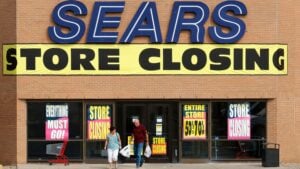
Organisations cannot afford to be indifferent to their environmental, social and governance practices. Intangible assets offer a unique framework for adding value and calming doubts about return on investment for shareholders.
More organisations around the world are examining the benefits of implementing environmental, social and governance (ESG) agendas. However, some management teams are still facing difficulties justifying the return on investment (ROI) of specific ESG initiatives to their shareholders. This ultimately produces a delay in ESG implementation and often also erodes its advantages.
The primary reason why it is difficult to justify ROI of ESG investment is because of the lack of globally accredited frameworks beyond the familiar metrics provided by the balance sheet and profit and loss statements. Many ESG initiatives do not have a direct impact on these financial reports, while top-down ESG pronouncements to ‘save the planet’ are unlikely to do much to influence shareholders decisions. To get shareholders on board, management must link a company’s ESG priorities to shareholder value. While this can be challenging using traditional financial statements, an intangible assets framework offers fresh possibilities for assessing and bringing value to the surface.
Why intangible assets matter with regard to ESG
Intangible assets are everywhere. They are the primary drivers of company performance and growth, but are typically left off the balance sheet, not captured within profit and loss accounts, and are not tracked on the risk register.
In 1975, intangible assets accounted for 17% of the market capitalisation value for companies in the S&P 500. Today, they account for 90% of company value. Significant benefits of ESG investments go directly into increasing the value of organisations’ intangibles assets. Using intangible assets as a framework to examine ESG will help organisations make higher-quality decisions around such investments and eventually create shareholder value.
Our research and experience has shown that companies focusing on intangible assets consistently outperform their peers and industry benchmarks. Referring to Figure 1 (above), EverEdge Global identified 12 classes of intangible assets. Investments in ESG did not have a uniform impact on all the 12 classes, but did appear to have a more profound impact on: brand, approvals and certifications, industry expertise, and relationships.
There is no assurance that the impact of ESG initiatives on each of these four classes will apply, or that it will apply to the same degree, in every instance. Some are more likely to arise in certain industries or sectors; others will be more frequent in particular locations. Still, all four classes should be considered, regardless of a company’s business model or geography.
Where opportunity lies
Improved brand value
A company’s brand value is tied to its reputation in the market. It is not just the relationship between the company and the customer, but the perceived relationship on the customer’s part. By focusing on ESG, a company can build on a positive reputation that drives brand value. For example, sales of goods and services are, to some extent, emotionally driven. If a brand can demonstrate that it operates sustainably or, better yet, can take a leadership stance in this area, the brand’s value will be elevated through the association.
This is crucial as brand has the potential to contribute significant value to an organisation. Research from the Ipsos Global Trends 2021 survey highlights that an average of 70% of respondents across 25 surveyed countries say they buy from brands they believe reflect their own principles. With the world’s largest brands recognised as contributing billions of dollars in value to their organisations, protecting and actively managing brand value is critical.
Improved position in approvals and certifications
Regulations in certain economies already require ESG compliance. In such instances, ESG compliance gives organisations the legal right to play, and in others, the social approval to play. In multiple cases across sectors and geographies, we have seen that strength in ESG helps reduce companies’ risk of adverse government action.
It can also attract government support. A strong ESG proposition can help companies tap into new markets and expand into existing ones. When governing authorities’ trust organisations, they are more likely to award them the access, approvals and licences that provide fresh growth opportunities.
On the flipside, the absence of ESG compliance may result in heavy fines, termination of licences and even adverse legal consequences. Further, the global financial ecosystem is becoming increasingly sophisticated in its ESG requirements. ESG-compliant organisations have found themselves enjoying greater access to funding and loan approvals at significant lower lending costs than those that are not.
Improved position in industry expertise
Good governance develops industry expertise within organisations by creating job magnets for top talents in the market and increasing staff retention rates. It enhances employee motivation by instilling a sense of purpose and increases overall productivity. Just as a sense of higher purpose can inspire employees to better perform, a weaker ESG proposition can drag productivity down. The most glaring examples are high employee attrition rates, strikes and other labour actions within organisations that have poor governance. Businesses can boost employee motivation and attract talent through greater social credibility – they can also lose it as a result of weak purpose.
Improved industry relationships
Globally, a growing number of institutional investors are using ESG criteria when making decisions on portfolio holdings. The recent pandemic has further accelerated the need for ESG requirements. Having good practices in this area may not necessarily help an organisation secure a greater valuation, but it can help build good relationships with investors and means that they are less likely to be put off a deal due to bad governance. Reputable ESG practices may also help to establish better stakeholder relationships throughout the supply chain. For example, in 2021, Barclays reported that one in five UK retailers cancelled contracts with suppliers who fell short of ethical and sustainable standards. By building long-term, ESG-focused supplier relationships, businesses can do a better job of retaining customer accounts, make supply chains more efficient and ultimately improve shareholder value.
Referring back to Figure 1, to a lesser extent, ESG investments may also enable a company to increase the value of its other intangible assets (eg, network effects, content, confidential information) both directly and through the so-called ‘halo effect’, in which the positive impact of a company’s ESG initiatives in one area positively influences the opinion or feelings of stakeholders in other areas. This ultimately leads to an increase in value being derived from these initiatives.
You have to start somewhere
While not a silver bullet, intangible assets as a framework to measure the ROI of ESG investments can guide management teams and shareholders when it comes to their strategic planning and capital allocation towards becoming ESG-compliant organisations.
Jack Welch once remarked: “If the rate of change on the outside exceeds the rate of change on the inside, the end is near.” Companies that perform poorly in ESG criteria are more likely to endure adversity than companies that do not. If organisations remain indifferent about their ESG practices, in the long run, they might cease to exist altogether.
As originally published in IAM
Recommended Reads
Free 1hr Consultation
Intangible assets are a company’s greatest source of hidden value and hidden risk. Make the valuable visible in your organisation.
Sign-up for a free 1-hour consultation today.





